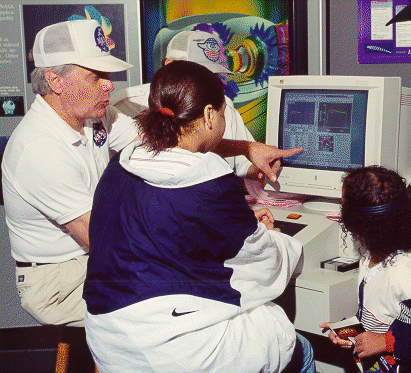
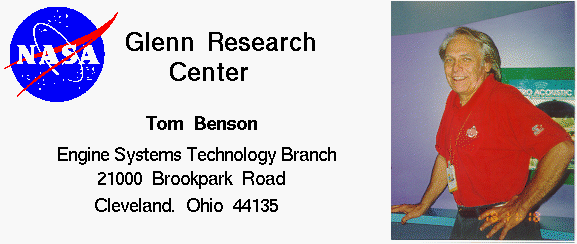
I have been an aeronautical engineer for almost 30 years. I have worked at the NASA Glenn Research Center in Cleveland, Ohio, for more than 20 years and have worked on many interesting fluid mechanics problems. Currently, I'm working with the Learning Technologies Project (http://www.grc.nasa.gov/WWW/K-12) developing interactive software to help students learn about math and science through an interest in aerodynamics and propulsion. I participate in videoconferencing workshops with both teachers and students, and I like to attend air shows and exhibits to meet the public.

Career Information
I was born and grew up in Columbus, Ohio. My engineering career began with an interest in airplanes and space flight when I was in grade school in the 1950's. During my childhood, I read science fiction stories and watched sci-fi movies. My brother and I built and flew paper airplanes, kites, wooden gliders, and rubberband-powered aircraft. We built and launched model rockets when NASA's Mercury project was just beginning. In fact, most of my paper route money was spent on plastic model airplanes and spacecraft--I still have some of the spacecraft! But I really didn't want to be an engineer. I wanted to be an All-American running back at Ohio State. Science was fun, but I loved football.
In high school, I was pretty good at math, science, and reading (English). As a 10th grade science fair project, I built a very simple, manually-switched computer that always beat the user at Tic-Tac-Toe. Computers were relatively new at that time, and the experience taught me a great deal about computers. But I still didn't want to be an engineer. The Beatles had just come to America, and I wanted to be a rock star, although becoming an astronaut looked like fun too as NASA flew project Gemini.
In 1965 I entered Ohio State University to major in electrical engineering, but quickly switched to aeronautical engineering as the Apollo program picked up steam. I enjoyed learning about airplanes and spacecraft and still built models and flew rockets. I wasn't good enough to play college football, and my guitar playing needed improvement. But I liked science and math, enjoyed solving problems, and could get paid to work with airplanes. So that was my career choice. College seemed to go by very quickly, and there was so much to learn besides aerodynamics. I really enjoyed art, literature, and music courses along with the boundary layer theory, thermodynamics, and calculus. I graduated in 1971 with Bachelor's and Master's of Science Degrees in Aeronautical and Astronautical Engineering. As a master's student, I studied how blood flows through the circulatory system of the body. My thesis project was a computational model of the flow in the capillaries (the smallest blood vessels in the body).
From 1971 to 1975 I served as an enlisted man in the United
States Air Force at Wright-Patterson AFB in Dayton, Ohio. Because I had a college
degree, I was able to work as an engineer in the Inlet Aerodynamics group of
the Aeronautical Systems Division. The inlet
is the part of the aircraft that brings air into the propulsion system. 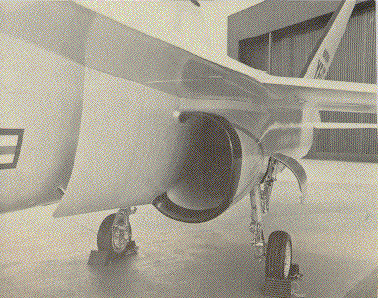 It was a very busy and exciting time. I participated in the wind tunnel testing
and performance assessment for the inlets on the B1-A, F-16, and YF-17 (later
to become the Navy F-18). I was also on the source selection team for the Air
Combat Fighter (F-16) and the EF-111 and was involved in performance predictions
of the F5-E and Airborne Command Post (later to become the 747 version of Air
Force 1). I even participated in flight tests on the IR-suppression system of
the AC-130 gunship.
It was a very busy and exciting time. I participated in the wind tunnel testing
and performance assessment for the inlets on the B1-A, F-16, and YF-17 (later
to become the Navy F-18). I was also on the source selection team for the Air
Combat Fighter (F-16) and the EF-111 and was involved in performance predictions
of the F5-E and Airborne Command Post (later to become the 747 version of Air
Force 1). I even participated in flight tests on the IR-suppression system of
the AC-130 gunship.
When my military service time ended, I returned to Ohio State to work on a Ph.D. After more classwork on the computational modeling of fluid flows and passing my general exams, I applied to NASA to become an astronaut, but was not selected.
In 1978 I became involved in NASA's aerospace research programs at NASA Lewis (now called NASA Glenn). I planned to finish my dissertation while working at NASA, but never did. My first assignment involved building and testing large computer programs that could analyze the three-dimensional, supersonic flows through high speed aircraft inlets. This area of research is called Computational Fluid Dynamics (CFD) and allowed me to use both my academic and my military experiences. We were particularly interested in the flow through a Mach 5, rectangular inlet for hypersonic flight. We discovered some interesting flow problems associated with this type of inlet, and we are still trying to solve them.
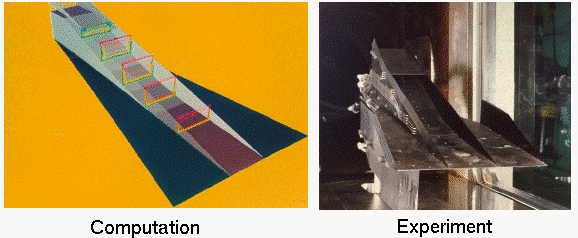
Based on my inlet work, I was assigned to the National Aerospace Plane (NASP) project to develop a vehicle that would take off like an airplane and fly into low Earth orbit (like Luke Skywalker's X-Wing Fighter!). There were many technical meetings on that project and I had to travel around the country to work with fellow CFD and high speed inlet people in government and industry. I was appointed to an AGARD (NATO) working group on inlets that required several trips to Europe to work with British, German, French, and Italian researchers. Meanwhile, a group of us at Lewis began a CFD project to build an easily modifiable computer program. Ideas and elements of this program were used in several other projects at that time.
I again applied to be an astronaut and was again turned down, although I was offered a chance to work in Houston. I decided instead to stay here at Glenn and to give management a try. But after a year, I found that I didn't like management (too many meetings :-) . So I returned to the technical world but in a slightly different area. I worked for several years using CFD on space experiments. One of the experiments was flown on the Space Shuttle to test methods for moving fluids in microgravity.
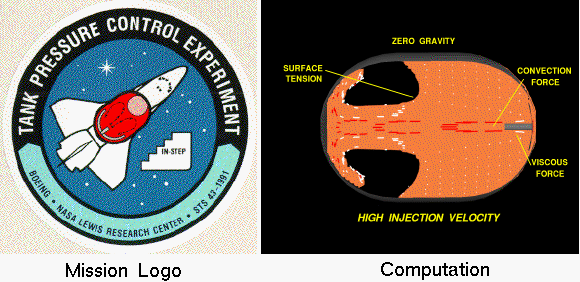
The CFD programs that I used at that time were "batch" programs that ran on a large mainframe for many hours. But I was becoming more interested in interactive programs, like video games, in which the user changes some input to the program and the program computes a new result and presents the answer immediately to the user. I wanted to research the use of this kind of technology to study aircraft problems. As I began to test an interactive design program, it occurred to me that the program could be better used as an educational tool (or toy :-). I started to build small, interactive computer programs for college students to learn the basics of aerodynamics by changing flow inputs to the programs and seeing (or plotting) the results. The programs are designed to look and act like an experimental wind tunnel, but they run on a desktop computer. The programs have now been modified for high school and middle school students and are available to everyone on the World Wide Web.
Other Interests
I still play guitar (not very well) and have played in a rock band and a blue grass band here at Glenn. I sing and play in church every Sunday. I like all kinds of music, but especially classical music. (I once appeared as an extra in a New York Metropolitan Opera production of Aida.) I don't play football anymore, but try to stay in good physical shape by riding a bike to work every day instead of driving a car. It's about an 8 mile trip from my home to Glenn, and I ride rain or shine--even through the snow sometimes. Though I work in aeronautics, I've kept up an interest in the space program and its history and continue to build model rockets and spacecraft. And I still like a good sci-fi movie ... and still like to read books when I can find the time. Most recently, I'm working through Douglas Adams' Hitchhiker's Guide Trilogy for the second time. I'm also interested in the history of aeronautics. With the 100th anniversary of the Wright brother's first flight approaching, I've begun to work with our Office of Educational Programs to prepare for the big event. I've built some computer models of the Wright aircraft and am currently involved with an attempt to fly a replica of their 1900 aircraft as a kite.
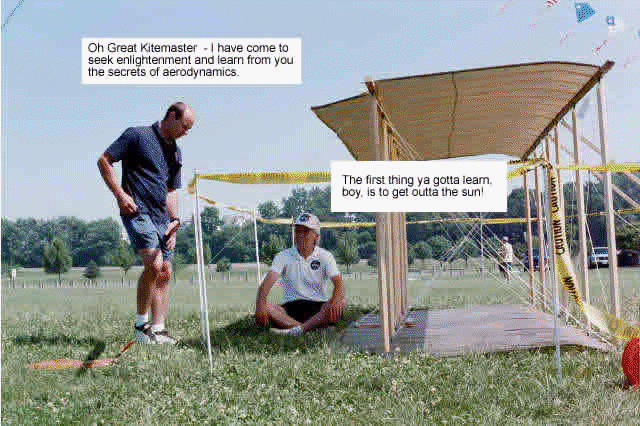
Navigation..
Go to...